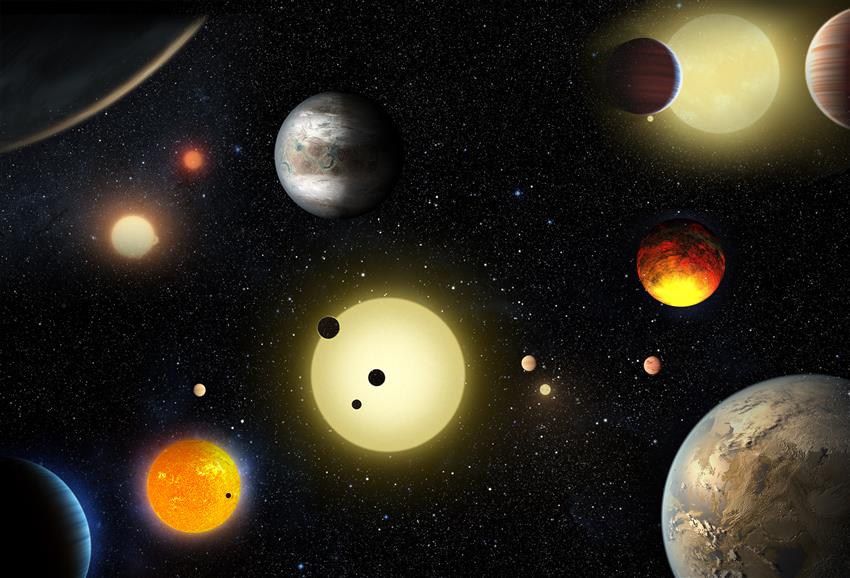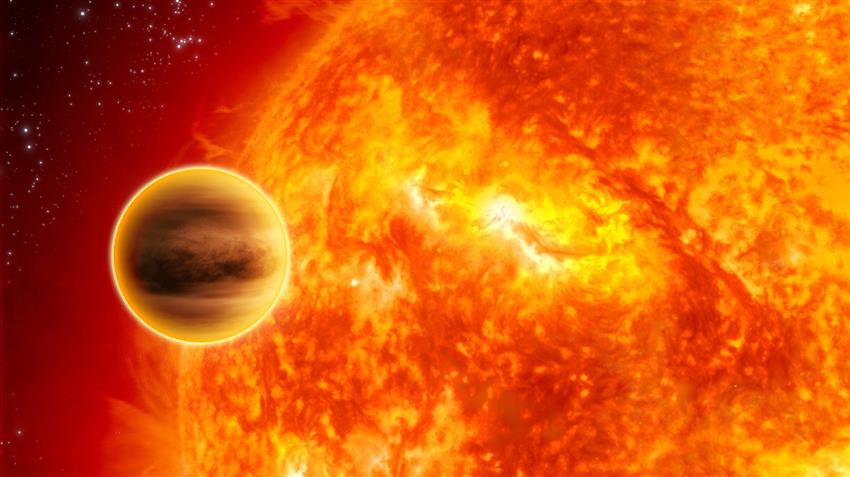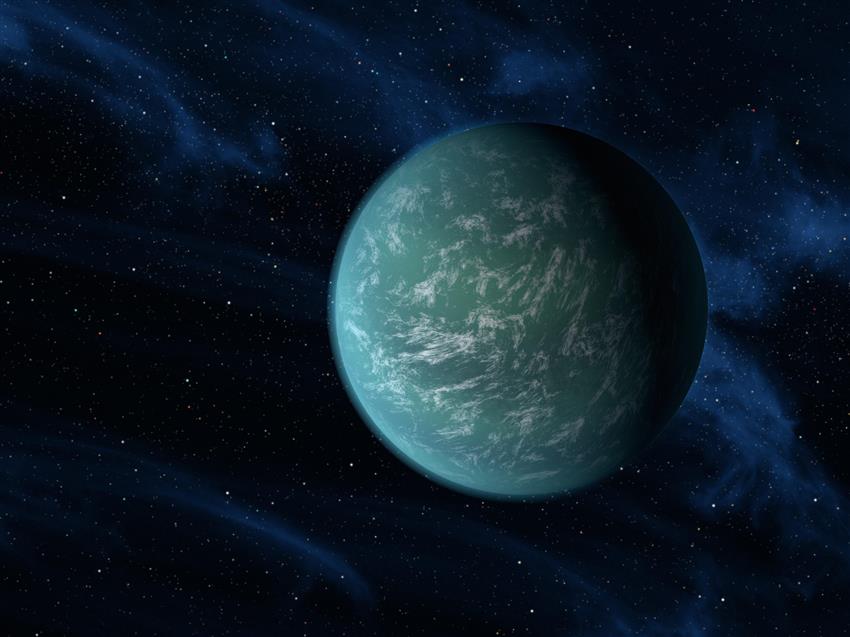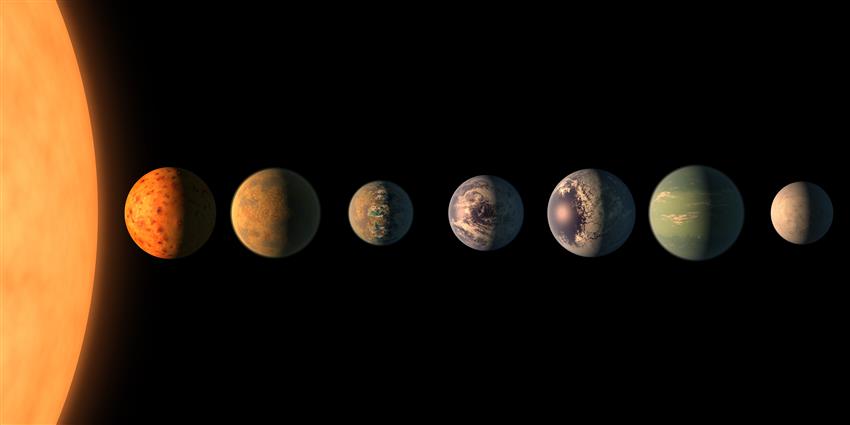The exoplanet zoo
Scientists have long wondered if stars other than our Sun could also have planets orbiting them. In the last few decades, astronomers have been able to detect thousands of these planets beyond our solar system. We now know of over 5000 exoplanets and counting!
What is an exoplanet?
An exoplanet is a planet that is outside our solar system. Exoplanets are typically found orbiting a star other than our Sun. In the same way that our solar system contains eight planets, other stars can have many exoplanets in orbit around them.
Exoplanets are named after the stars they orbit. For example, the star TRAPPIST-1 has seven exoplanets in its system. Researchers have named them TRAPPIST-1b, TRAPPIST-1c, TRAPPIST-1d, and so on, up to TRAPPIST-1h. (TRAPPIST-1a is skipped because it informally refers to the system's central star.) The lowercase letters are given to the exoplanets in order of their discovery date. If many exoplanets are discovered at the same time, the lowercase letters are assigned according to how close the exoplanets are to their host star.
Types of exoplanets
A wide variety of planets exist in our solar system, ranging from rocky planets (like Earth) to gas giants (like Jupiter). Exoplanets are even more diverse. Here are some of the types that make up the zoo of exoplanets:
- Hot Jupiters: Large gas giants like Jupiter, but with one key difference – they are found very close to their host star, even closer than Mercury is to the Sun
- Mini-Neptunes and Super-Earths: The most common type of exoplanet observed by scientists, these could be supersized rocky planets, or gas planets smaller than Neptune
- Ocean worlds: Exoplanets that feature a rocky core which is completely covered by a vast liquid ocean hundreds of kilometres deep
- Rocky worlds: Earth- or Mars-like planets with a solid surface, which may or may not include small oceans or have an atmosphere
According to astronomers, over 50 percent of stars likely host at least one planet. Scientists continue to discover surprising alien worlds that are sometimes stranger than fiction – and the discovery of these faraway planets can mark important milestones in the history of astronomy.
Famous exoplanets
51 Pegasi b
51 Pegasi b was the first exoplanet ever discovered orbiting a star that resembles our Sun. Also the first Hot Jupiter ever observed, this gas giant located 50 light-years from Earth takes only 4.2 days to orbit its star.
51 Pegasi b's discovery in by Swiss astronomers Michel Mayor and Didier Queloz surprised the scientific community since models of planetary formation at the time did not predict its existence. The pair later won the Nobel Prize in Physics in for their achievement.
Kepler-22b
Roughly twice the size of Earth, Kepler-22b was discovered in by NASA's Kepler Space Telescope. The exoplanet was the first to be found in any star's habitable zone.
Although scientists are unsure what Kepler-22b looks like, the exoplanet orbits its star at just the right distance – where a planet is most likely to have a climate that would allow any water on its surface to remain liquid.
This area is also called the Goldilocks Zone, since the conditions are not too hot, not too cold, but just right. However, there are no guarantees that this exoplanet, located about 600 light-years away from Earth, hosts alien life, or that humans could live on it.
Proxima Centauri b
Proxima Centauri is the closest star to the Sun. This red dwarf star is located 4.2 light-years – or 40 trillion kilometres – away from Earth. An exoplanet, Proxima Centauri b, was detected orbiting this star in .
Proxima Centauri b is a rocky planet that is a bit larger than Earth. Like Kepler-22b, it is also located in its star's habitable zone. Scientists find this exoplanet very intriguing, but they will have to continue studying it from afar – even using the fastest space probe ever built, the Parker Solar Probe which could travel at speeds of up to 724,000 km/h, it would take almost 7000 years to reach Proxima Centauri b!
In , scientists confirmed the existence of a second planet in this system: Proxima Centauri c. This super-Earth or mini-Neptune is about 7 times as massive as our planet, but orbits its star beyond the habitable zone.
The TRAPPIST-1 system
In , a team of scientists announced they had discovered three exoplanets orbiting TRAPPIST-1, a star about 40 light-years away from Earth. After observing the system with more telescopes, they found four additional planets.
All seven TRAPPIST-1 exoplanets (b, c, d, e, f, g and h) are rocky and similar in size to Earth. At least three of them are located in the star's habitable zone.
The TRAPPIST-1 system will be an important target for observation with the James Webb Space Telescope, to help researchers better understand other worlds. A Canadian team of astronomers will be studying the atmospheres of TRAPPIST-1 d, f, and g using the Canadian-made Near-Infrared Imager and Slitless Spectrograph (NIRISS) instrument.
The HR 8799 system

[YouTube video] An animation composed of direct images of star HR 8799 and its four orbiting exoplanets. The central star, marked with a star symbol, has been masked to reduce glare and improve the visibility of the planets. The images were taken over seven years using the Keck Telescope in Hawai'i. (Credit: Jason Wang [Caltech]/Christian Marois [NRC Herzberg])
The four exoplanets found orbiting star HR 8799 make up the first multi-planet system to ever be directly imaged – meaning that astronomers took real pictures of the distant planets, instead of simply detecting their effects on the host star.
Each of the gas giants boasts between five and ten times the mass of Jupiter. Their great distance from their star makes them easier to spot. The system's most distant exoplanet, HR 8799 b, takes 460 years to complete one orbit – almost twice the time it takes dwarf planet Pluto to travel around the Sun!
The system was discovered in by three Canadian astronomers:
- Christian Marois (NRC-Herzberg)
- René Doyon (Université de Montréal), also Principal Investigator of the Canadian Webb science team
- David Lafrenière (Université de Montréal), also a member of the Canadian Webb science team





